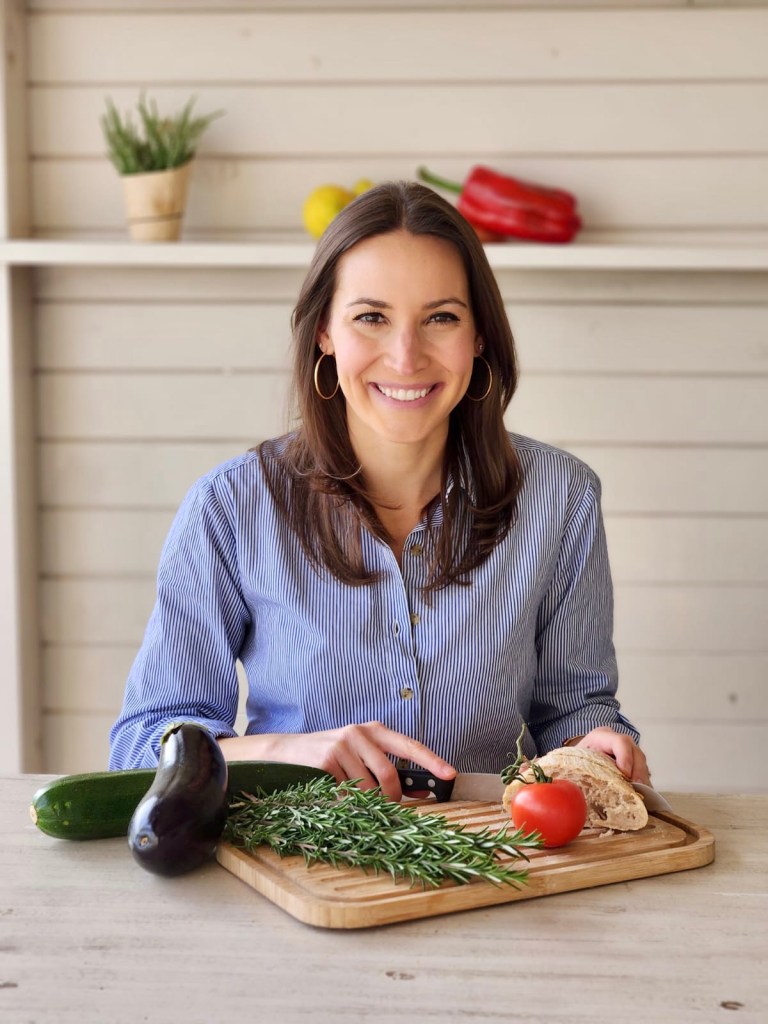Your cart is currently empty!
Iron-Rich Foods For Pregnancy

Iron is a mineral that is important during pregnancy. It is necessary for oxygen transportation, physical growth, neurological development, and gene regulation (1, 2). During pregnancy, iron needs increase by 50% (1). This increased need puts pregnant women at risk of consuming inadequate iron, which could lead to iron deficiency and/or anemia. Iron deficiency and/or anemia during pregnancy has been associated with increased risks for negative health outcomes, including preterm birth, low birth weight, small for gestational age babies, and impaired cognitive function (2). Understanding which foods contain iron and eating iron-rich foods can help prevent an iron deficiency. In this post, I will highlight the different types of iron and share iron-rich foods for pregnancy and meal ideas to promote iron intake.
Adequate iron intake is especially important during the third trimester. At the end of pregnancy, the mother transfers the greatest amount of iron to the fetus in preparation for birth.

Types of Iron
There are two different forms of iron found in food: heme and non-heme iron.
Heme Iron
Heme iron is the type of iron that is found in animal foods. Meat, fish, and poultry are the primary dietary sources of heme iron. Heme iron is the more bioavailable form of iron and is readily absorbed and utilized by the body.
Non-heme Iron
Non-heme iron is the type of iron that is found in plant foods. Nuts, beans, lentils, tofu, leafy greens, and fortified grains are dietary sources of non-heme iron. Non-heme iron is not as readily absorbed and utilized by the body as heme iron. However, consuming non-heme iron with a source of vitamin C can enhance its absorption (1). Vitamin C is found in fruits and vegetables, such as citrus fruits, strawberries, tomatoes, broccoli, bell peppers, and kiwis (3).

Iron-Rich Meal Ideas
- Veggie Omelette with eggs, kale, tomatoes, and peppers. Eggs are one of my favorite foods for pregnancy! The eggs contain iron, the kale is a plant source of iron, and the tomatoes and peppers contain vitamin C.
- Spinach Salad with chicken, chickpeas, spinach, and strawberries. The chicken contains heme iron, the chickpeas and spinach contain non-heme iron, and the strawberries contain vitamin C.
- Steak Fajitas with steak, peppers, and beans. Steak contains heme iron, beans contain non-heme iron, and the peppers contain vitamin C.
- Turkey Chili with turkey, beans, and tomatoes. The turkey contains heme iron, the beans contain non-heme iron, and the tomatoes contain vitamin C.
- Lemon Salmon & Broccoli with salmon, lemon, broccoli, and rice. The salmon contains heme iron, lemon contains vitamin C, rice contains some non-heme iron, and broccoli contains both non-heme iron and vitamin C.
Calcium and Iron Absorption
Consuming either heme or non-heme iron at the same time as calcium or excess consumption of calcium can decrease the absorption of iron. Many prenatal vitamins contain either iron or calcium, but not both. It’s important to work with your healthcare provider to determine the right prenatal supplement for you to meet your needs.
Conclusion:
Iron needs significantly increase during pregnancy. This increased need puts pregnant women at risk of obtaining insufficient amounts of iron, which could lead to an iron deficiency. Consuming iron-rich foods from both plant and animal sources can help prevent an iron deficiency.
References:

Mel is a Registered Dietitian who is passionate about helping women nourish themselves and feel their best during the preconception, prenatal, and postpartum times. She has a Bachelors degree in Biological Engineering from Cornell University and a Masters degree in Nutrition from Teachers College, Columbia University.
2 responses to “Iron-Rich Foods For Pregnancy”
-
[…] whole foods rich in vitamin A, vitamin C, iron, folate, zinc, and protein can help support your body during postpartum. Vitamin A and C are […]
-
[…] folate and non-heme iron (3,4). Bell peppers contain vitamin C (5). As reviewed in my last post, Iron-Rich Foods For Pregnancy, consuming non-heme iron with a source of vitamin C can increase the absorption of […]
About Mel

Hi, I’m Mel! I am a Registered Dietitian who is passionate about helping women nourish themselves and feel their best during the preconception, prenatal, and postpartum times. I provide evidence-based care to help women make the best nutritional choices to support themselves.
I guide women in making the right meal and nutrient choices without sacrificing the foods that they love. Everyone is unique, which is why I have an individualized approach and focus on how to make nutrition work for you and your lifestyle. Read More
Subscribe
Enter your email address to receive Well By Mel Nutrition's latest women's nutrition content by email.
Recent Posts
- Why You Shouldn’t Try To Lose The Baby Weight Fast

- Nutrition to Help Boost Fertility Naturally

- What To Look For In A Prenatal Vitamin

- Healthy Breakfast Ideas For Pregnancy

- Iron-Rich Foods For Pregnancy

Not sure what to eat during pregnancy?
Get the Nourished Pregnancy Guide!
-
 Nourished Pregnancy Guide$29.99
Nourished Pregnancy Guide$29.99

Leave a Reply